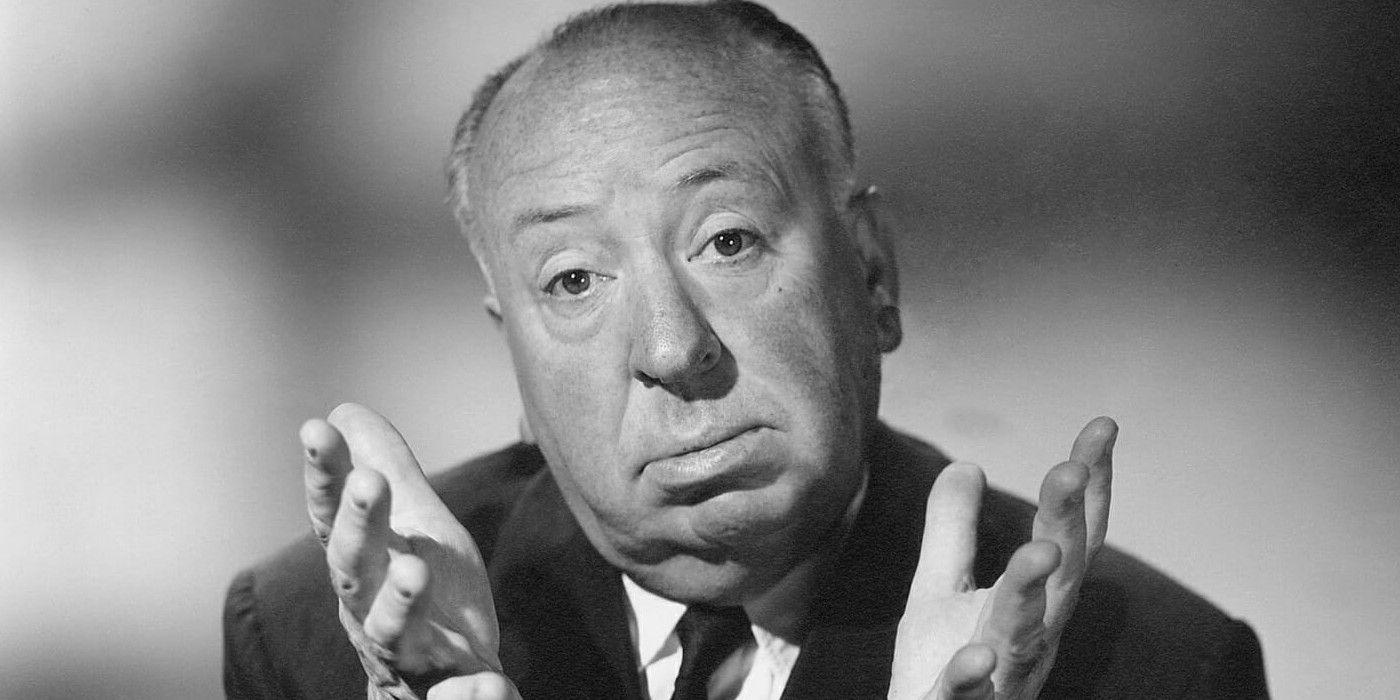
これは、これまでに作られた最大のサスペンス映画の1つであると広く考えられており、それは誇張ではありません。実際、映画がどれほど衝撃的であるかを *控えめにすることさえあります。 Alfred Hitchcockはこのジャンルで多くの素晴らしい映画を作成しましたが、これはその執筆と視覚的なスタイルにおいて特に革新的であり、彼のキャリアの中で傑出しています。 リアウィンドウは、映画撮影に関しては、Vertigo とPsychoと並んで、彼の3つの最も影響力のある映画の1つです。ヒッチコックは、他の人を密かに見ている主人公に焦点を当てることで、聴衆が見ることができるものを巧みに操作します。結果は、間違いなく、サスペンスのマスターがこれまでに監督した中で最もサスペンスな映画です。
1954年のミステリースリラーは、ジェームススチュワートをL.B. 「ジェフ」ジェフリーズ、怪我のために彼のアパートに閉じ込められた写真家。ジェフは世界中のニュースをカバーしながら危険な写真を撮ってキャリアを築きました。彼は人々に興味があったので、中庭を見下ろす窓から隣人を見始めました。グレース・ケリーは、ファッションで働いている彼のガールフレンド、リサ・フリーモントを演じます。彼女はジェフが受け入れる必要がある変化を表しており、彼は彼らに開かれています。両方の俳優は、ヒッチコックの熟練した方向性を補完する優れたパフォーマンスを提供します。中心的な物語はサスペンスの殺人ミステリーですが、ジェフとリサの関係と結婚のアイデアも反映しています。他人の私たちの理解は、私たちが観察していることから来ており、誰かを本当に知っているということは、彼らが明らかにすることを選んだものを見ることを意味します – 彼らの人生の「窓」を覗き込むことです。
ヒッチコックは、ユニークな視点を作成することにより、ピークサスペンスに到達します
Alfred Hitchcockは、特定のスタイルに特化した監督の完璧な例ですが、彼の影響はそのスタイルよりもはるかに到達しています。彼はサスペンスのマスターとして有名ですが、彼はまた、多くの異なるジャンルであらゆる種類の映画製作者に大きなインスピレーションを与えています。 1950年代および60年代のフランス映画製作者の新しい波から現在の映画学生まで、ほとんどの意欲的な監督は、ヒッチコックの慎重かつ正確な監督に感銘を受けた可能性があります。彼の映画のすべては非常に意図的な感じがします、そしてそれは間違いなく、監督の詳細な計画と完璧な実行に対するよく知られている献身のためです。
リアウィンドウは、ヒッチコックの以前の映画と同じ詳細な準備の恩恵を受けましたが、彼はこれについてさらに野心的なものを目指しました。彼は映画の写真を扱うために頻繁に協力者のロバート・バークスを持ち込みました。バークスは挑戦的な仕事に直面しました。映画の大部分で主人公の視点を通して見られるようにアパートの建物を撮影することです。バークスは以前、列車で見知らぬ人の撮影監督であり、殺人のためにmをダイヤルし、を撃ち、泥棒を捕まえました。ヒッチコックは彼の完璧主義で知られていましたが、リアウィンドウは、彼の最も大切なプロジェクトの1つであり、創造と視聴の両方でした。彼は一貫してこの映画への愛情を彼の生涯を通して表明しました。
この映画は、主人公の視点から完全に組み立てられており、ほとんどの外部ショットは、彼の窓から見られているかのように表示されます(彼がソーンワルによって押し出された最終シーンを除いて)。中庭のビジュアルを完全に制御するために、プロダクションデザイナーのHal PereiraとJoseph Macmillan Johnsonは、Paramount Studiosのステージ17でグリニッジビレッジコートヤードの非常に詳細なレクリエーションを6週間費やしました。これは、パラマウントがその時点まで構築した最大の屋外セットでした。雨の夜の効果を作成するための広範な排水システムを備えており、ジェフが観察する7つのアパートの細心の注意を払って作られたインテリアを含めました。
本当に素晴らしいジャンル映画を作成することは、魅力的な物語と巧みな映画製作という2つの重要な要素に依存しています。ジャンルに関係なく、物語の撮影方法は、物語そのものと同じくらい重要です。たとえば、ラブストーリーがホラー映画のように撮影されている場合、結果は素晴らしいロマンスではありません。このような壮大なセットは、本当に魅力的な物語がなければ素晴らしい映画を保証するものではありません。逆に、最高のストーリーでさえ、リアウィンドウに見られるような、強力な技術的実行なしでは完全に効果的ではありません。
The connection between these story elements is clearest when Thornwall goes to Jeff’s apartment and attacks him. Because the audience has only seen Thornwall from afar and knows only what Jeff does, this moment creates intense suspense. While the scene could have been filmed in a typical suspenseful way, the specific choices made significantly increase the tension. The combination of Jeff hearing someone approach, seeing Thornwall in the darkness, and then using his flashbulbs to temporarily stop him, all build to a peak of suspense for the viewer.
Rear Window Has Been Influential Far Beyond the Suspense Genre
Hitchcock consistently shows the story through Jeff’s eyes. This is a frequent technique in suspense films – it keeps the audience feeling like they’re part of the mystery *with* the main character. However, Rear Window really emphasizes this by filming everything entirely from Jeff’s perspective, mirroring how trapped he feels in his wheelchair. All the footage of the courtyard is shot either with wide angles, to resemble normal vision, or with a telephoto lens, to simulate looking through Jeff’s binoculars. When Jeff uses his camera, the filming style even changes to include the circular shadow that appears in his viewfinder.
The film’s viewpoint stays strictly with what Jeff notices within his apartment. The camera work specifically follows Lisa around to show where his attention lies. She’s constantly the subject of his gaze-even just as a shadow while she’s in the kitchen-which highlights how their relationship is central to the story, though often hinted at indirectly. Every scene is built on what Jeff perceives, the ambiguity of the information, and the reasoning behind his beliefs. The clever way the film portrays voyeurism is what makes Rear Window so gripping, but it’s more than just a suspenseful thriller. It’s a remarkable feat of storytelling, perfectly put together on a technical level.
Although the studio set was custom-built for the film, Hitchcock still encountered difficulties getting the shots he envisioned. To achieve the effect of a long-focus lens without reconstructing part of the set, Burks had to carefully plan the installation of a large crane extending from Jeff’s window. This dedication to the filming plan highlights the significant achievement of Hitchcock and his team, and it wasn’t a fluke that the movie became a frequent topic in film criticism and film theory. While a film exploring voyeurism didn’t necessarily *need* to be filmed this way, the 2007 film – which shares a very similar storyline (with some viewers calling it a copy or homage) – demonstrates that a movie on this theme can still be thrilling even with a different visual approach. Looking back, it seems simple, but filming Rear Window from Jeff’s point of view with such accuracy was innovative for 1954. Stories told from a first-person perspective had never been filmed quite like that before.
In a 1954 review, French New Wave director and critic François Truffaut explained Hitchcock’s brilliance with this comparison: “The courtyard represents the world, the reporter or photographer is the filmmaker, and the binoculars symbolize the camera and its lenses.” Later, in the 2003 book Hitchcock and Poe: The Legacy of Delight and Terror, film theorist Dennis Perry pointed out how the filming in Rear Window makes viewers aware of their own tendency to watch others – a way to avoid “the burden of examining (their) own lives.” This also applies to Jeff’s character, who uses voyeurism to avoid committing to marriage and a settled life. These observations both demonstrate how the story and the filmmaking techniques combine to create deeper levels of meaning.
After watching this film, I’m convinced that Hitchcock really delivered a powerful and complex commentary on society, the filmmaking process itself, and how we, as viewers, respond to what we see. Rear Window continues to be a favorite among both critics and audiences – and rightfully so, boasting a fantastic 99% score on Rotten Tomatoes. Its impact on cinema is undeniable. You see its influence everywhere, not just in direct references like Disturbia, but also in films such as Brian de Palma’s Body Double, Chloe Okuno’s Watcher, and countless others. More than that, though, Hitchcock really elevated the art of filmmaking, pushing the boundaries of first-person perspective in both cinematography and storytelling as a whole.
- JPY KRW 予想・見通し・の予想
- BTC 予想・見通し・の予想. BTC 暗号通貨
- @#!! Bitcoinic Plunge:Droppin ‘$ 110K?
- 『ハリー・ポッター:暗黒卿の帰還』は2025年に公開される?新作映画の憶測を解説
- EUR JPY 予想・見通し・の予想
- ミーガン・バートン・ハンソンは泣き崩れ、家族の悲劇とウェス・ネルソンとの悲痛な別れが「私の人生で最悪の部分」だったと明かす
- CNY JPY 予想・見通し・の予想
- ウィキッド:良いキャストのために、ドロシー役はアリーシャ・ウィアーではなくベサニー・ウィーバー
- イエロージャケッツ キャスト: ヤング&オールド キャラクター ガイド (写真)
- 『セリング・サンセット』のエマはクリシェルのドラマ後もボーイフレンドのブレイクと付き合っている?
2025-10-05 19:45